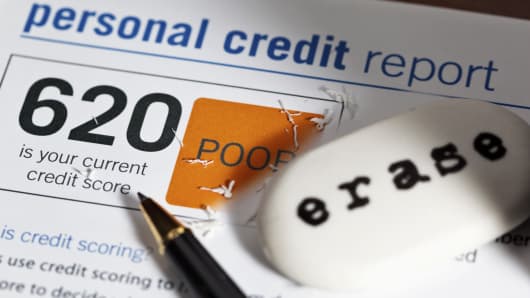Everyday, middle-class Americans — even those with jobs — can't rely on a steady income month to month, nor can they depend on their budget staying in line with their salary. Practically, what these income and spending swings mean is that a significant percentage of Americans across the wealth spectrum may not have the money they need to cover their expenses — especially unexpected expenses.
In the past, being a member of the middle class meant you had savings you could rely on. If unplanned medical or repair bills arose, or a job was lost, circumstances didn't immediately become dire. But a recent survey from Bankrate.com shows that today, most Americans have no cushion at all: 62 percent have no emergency savings. Instead, the average American is living paycheck to paycheck.
Read MoreLauren Bush: Why are people with jobs going hungry?
This growing trend of income instability raises broader questions about how middle-class Americans can make ends meet without doing permanent damage to their finances. With traditional financial institutions turning these customers away in droves — over 40 percent of Americans are considered "subprime" with FICO scores below 700 and are thus ineligible for mainstream credit source — their only recourse is often the high-interest alternative world of pawn, payday and title loans.
Instead of forcing this new middle class to resort to dead-end products, or waiting for banks to find a solution, we need to focus on improving access and quality of credit. FICO scores and income statements — the sole measures mainstream creditors use to determine creditworthiness — paint only a partial picture. We need a more nuanced view of today's new middle class consumer. We need to acknowledge the challenges they face, and not only give them better solutions than the ones they have available, but put them on a path where accessing mainstream credit and building a nest egg isn't a dream; it's reality.
Read More Why lower gas prices haven't helped much
Technology holds the key to innovating these better solutions. With today's advancements in big data and smart analytics, a borrower's risk profile doesn't need to be quantified by a single number. As we adopt these new technologies that allow us to view each consumer as an individual, rather than their FICO score, we need to embrace a shift in focus. Lenders should look to more consumer-friendly lending models and seek to profit from their customers' financial successes, not from their hardships. Regulators must encourage innovation and avoid policies that ultimately remove access to credit.
The first step in this direction is finding the common ground between industry, regulators, consumer advocates and the most important constituents, the customers themselves. For the millions with income instability and poor financial options, we need to work together to develop truly progressive solutions that serve their pressing needs for credit while helping them to build improved financial behaviors and graduate (or return) to mainstream credit.
Ken Rees is CEO of Elevate, a leading provider of online alternative credit solutions. Follow @ElevateCredit on Twitter.


